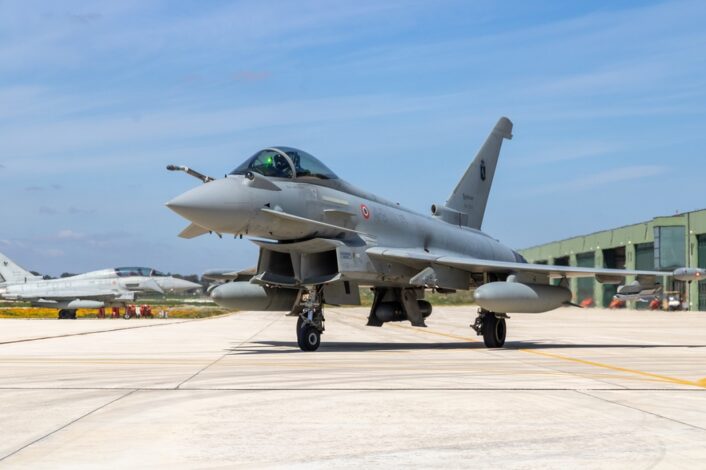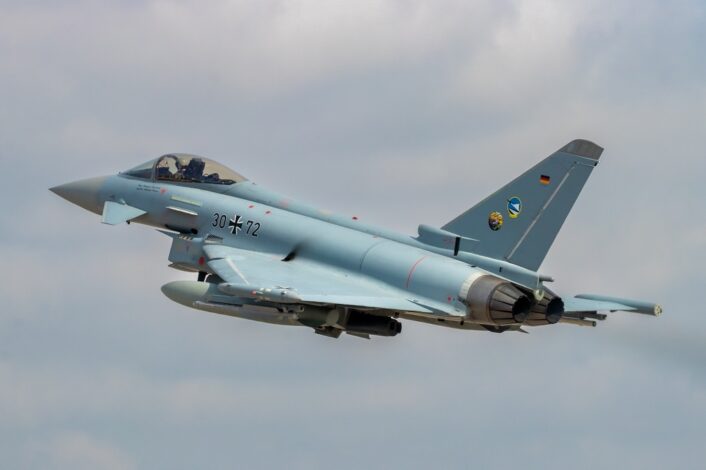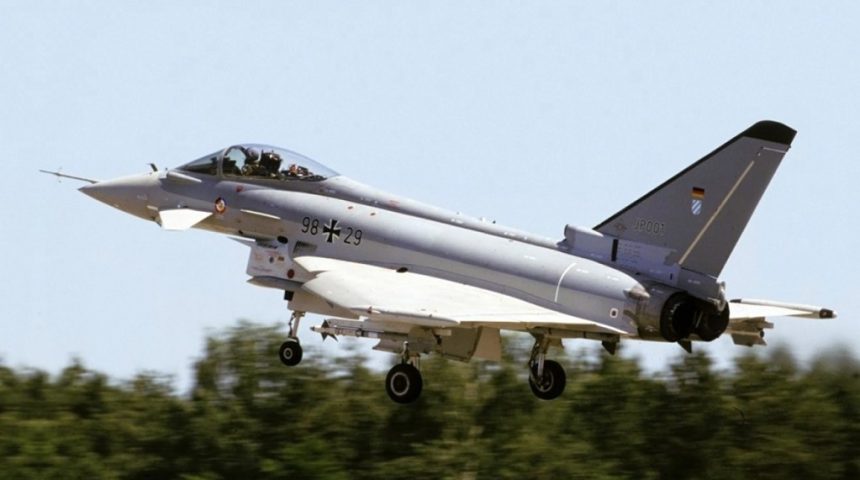The first Eurofighter development aircraft, DA1, performed its maiden flight on March 27, 1994 in Manching, Germany.
The Eurofighter Typhoon celebrates today the 30th anniversary of the maiden flight of the first development aircraft, DA1, from DASA’s site (now Airbus) in Manching, Germany on March 27, 1994. Flown by the company’s chief test pilot Peter Weger, the first Eurofighter, with the codes 98+29, took off in front of the crowd that gathered to witness the historic event.
“I knew that I was piloting an incredible aircraft and that we had something special,” said Weger. “It was one of those days that you will remember for the rest of your life.”
The aircraft DA1 flew with the RB199 engines, the same installed on the Tornado, which powered the first two development aircraft, while the third one, the Italian DA3, was the first to fly with the new Eurojet EJ200 engines, specifically developed for the Eurofighter, in 1995. The two engines of the Eurofighter produce around 150,000 horse-power and accelerate it up to Mach 2.35 – just under 2,900 km/, according to Airbus.
“Today is a special landmark and while we celebrate the people who dedicated their careers to creating an incredible aircraft, we can also look forward with excitement too,” said Eurofighter CEO Giancarlo Mezzanatto. “Because the aircraft they helped develop continues to go from strength to strength. That is their legacy”.
30 years later, the Eurofighter Typhoon fully matured into the all-weather, twin-engine, multi-role combat aircraft that can be employed efficiently for air-to-air and air-to-ground combat that we know today. Development is still ongoing to keep the Typhoon state-of-the-art for the next three decades with the Long-Term Evolution.

“Eurofighter Typhoon has established itself as the backbone of European defence and a fundamental asset for our air forces,” added Mezzanatto. “At the same time, the Eurofighter programme has played a pivotal role in fostering the fighter industry in the UK, Germany, Italy and Spain and will continue to do so for many years to come. The product vision is to keep Typhoon operationally effective for another 30 to 40 years.”
The Eurofighter Typhoon was developed jointly by four European countries: Germany, Great Britain, Italy and Spain, with the first three exploiting the experience they accumulated with the Tornado. Initially, France was also involved in the program, although it later decided to leave and pursue the development of the Rafale.
The aircraft’s development effectively began in 1983 with the Future European Fighter Aircraft programme, while simultaneously another programme resulted in a technology demonstrator aircraft, the British Aerospace EAP that first flew on 6 August 1986. When DA1 performed its first flight in 1994, it was only known as Eurofighter. The name Typhoon was then adopted in September 1998.
The aircraft is built by the Eurofighter consortium, which involves Airbus (Germany and Spain), BAE Systems (UK) and Leonardo (Italy). The main components for the aircraft come from the four Eurofighter partner companies: Airbus Germany supplies the centre fuselage section; Airbus Spain the right wing; BAE Systems contributes the front fuselage section, the fin and, together with Leonardo, the rear fuselage; Leonardo also produces the left wing.
The components are then delivered to the four final assembly lines. Airbus produces the Eurofighter in Manching near Ingolstadt (for the German Air Force) and in Getafe near Madrid (for the Spanish Air Force). BAE Systems and Leonardo produce the aircraft in the UK (Warton) and Italy (Turin) respectively.

To date, 680 Eurofighter Typhoons have been ordered by 9 countries – 603 of which have already been delivered. With over 850,000 flight hours, the Eurofighter Typhoon forms the backbone of the German, British, Italian and Spanish air forces. Five export customers currently fly the Typhoon: Austria, Saudi Arabia, Oman, Kuwait and Qatar.
Airbus is currently manufacturing 30 single-seaters and 8 twin-seaters Tranche 4 Eurofighters for the German Air Force, the so-called Quadriga, in Manching. The aircraft will be delivered between 2025 and 2030 and will replace Germany’s first tranche of Eurofighters. Similarly, Airbus will deliver 20 new Tranche 4 Eurofighters, also known as Halcon I, to the Spanish Air Force from 2026 to 2030. A further 25 aircraft were approved as part of Halcon 2.
A new variant is also being developed, the Eurofighter EK (Electronic Combat), equipped with transmitter location and self-protection systems and AGM-88E AARGM anti-radiation missiles. The Eurofighter EK is to be NATO-certified by 2030 and will then replace the Tornado in the SEAD (Suppression of Enemy Air Defence) role for the German Air Force.









